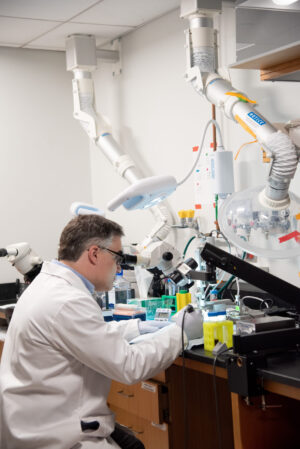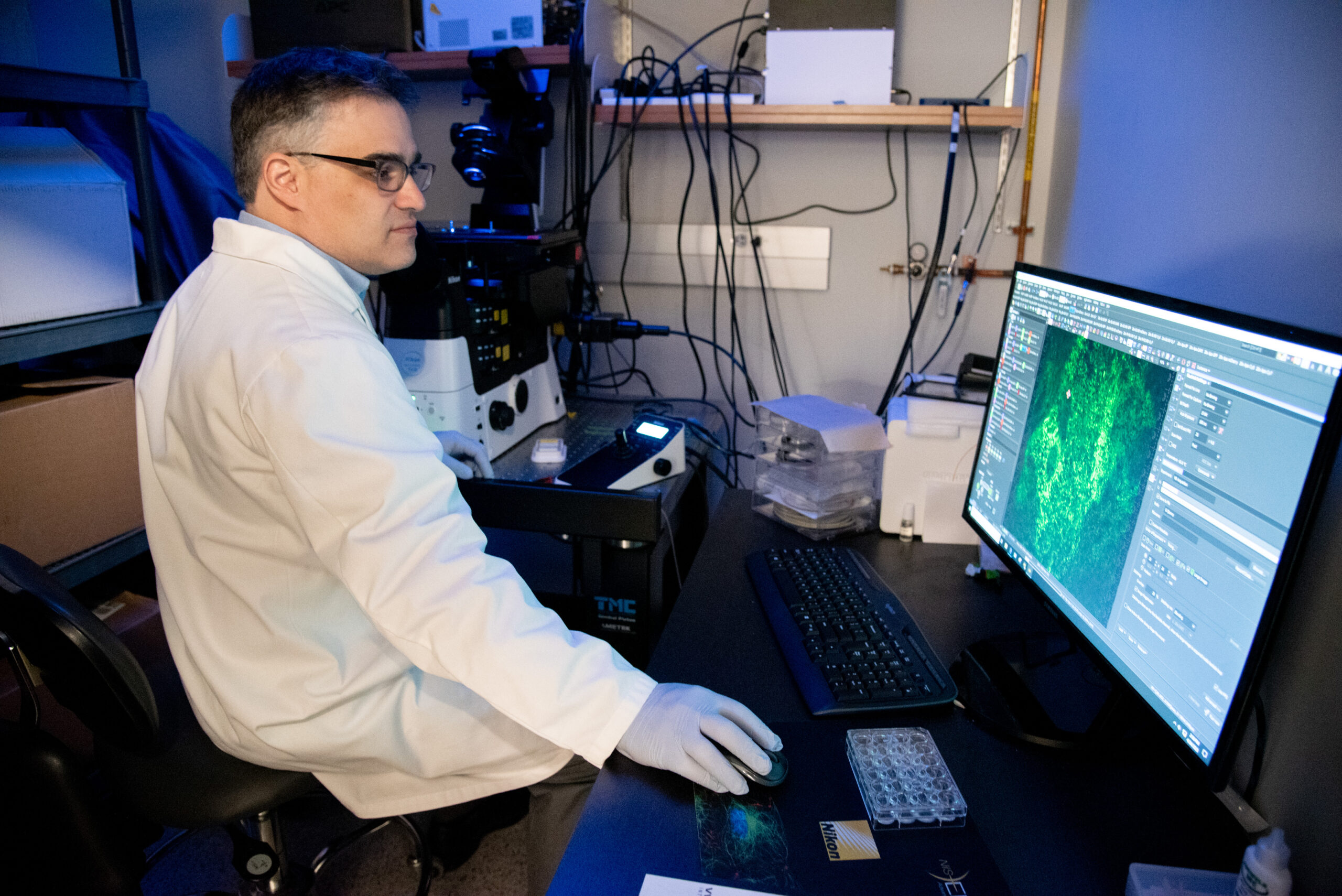David Simon, PhD ‹ Back To 2023 Winners
2023 Winners
Assistant Professor
Biochemistry
Weill Cornell Medicine
Vision
Our vision is to understand how the nervous system communicates with tumors. Tumors develop in tissues and organs that are dense with axons, the long cables that connect neurons with their target cells. Tissue-resident axons have functions as diverse as sensing the environment and controlling blood flow and immune function. There is a growing appreciation that signals from axons are important for tumorigenesis, but the nature of these signals is largely unknown. We arrive at this question from the perspective of neuroscientists interested in axonal growth and survival. We aim to use the neuroscientist’s toolkit of imaging and viral tools to dissect how and when axon-tumor interactions occur, with an eye towards harnessing these interactions for therapeutic benefit.
David Simon is an Assistant Professor of Biochemistry and a member of the Meyer Cancer Center at Weill Cornell Medicine. Trained as a neuroscientist, David received a combined B.S./M.S. in neuroscience at Brandeis, a Ph.D. in neurobiology at Harvard, and postdoctoral training in molecular neuroscience at Rockefeller and Stanford. He started his lab at Weill Cornell in 2019 with the goal of understanding the remarkable survival capacity of axons, the cable-like structures that connect neurons to their targets. David’s interest in cancer biology stems from a decade’s old finding by Rita Levi-Montalcini that tumors can secrete a factor that attracts the growth of axons. His lab has begun a new effort to study the biology of axon-tumor interactions in cutaneous melanoma using a panel of tools that they have adapted from their studies of axon survival. His lab uses powerful whole mount immunolabeling approaches to visualize entire tumors and their axons in 3D to study the anatomy of axon-tumor interactions. They further use viral and genetic tools to manipulate axon function and define the signals that axons send and receive in the tumor microenvironment. Raised as a scientist in the interdisciplinary world of neuroscience, David seeks to bring new tools and new ideas to the field of cancer biology.
Neural Regulation of Tumorigenesis
 The start and spread of tumors is heavily influenced by the collection of nearby cells known as the microenvironment. A surprising component of the microenvironment is axons, the cable-like projections between cells of the nervous system. Indeed, in organs ranging from the brain to the pancreas, tumors with more axons metastasize to a greater degree. Our work is focused on understanding how the nervous system contributes to cancer progression and whether manipulation of nerve-tumor interactions can be harnessed for therapeutic benefit.
The start and spread of tumors is heavily influenced by the collection of nearby cells known as the microenvironment. A surprising component of the microenvironment is axons, the cable-like projections between cells of the nervous system. Indeed, in organs ranging from the brain to the pancreas, tumors with more axons metastasize to a greater degree. Our work is focused on understanding how the nervous system contributes to cancer progression and whether manipulation of nerve-tumor interactions can be harnessed for therapeutic benefit.
“We are neuroscientists, not cancer biologists. This prize gives us the support necessary to take a big risk and enter a new field where we hope to define how the nervous system regulates tumorigenesis, and discover whether nerve-targeted manipulations can function as effective cancer therapies.”
We approach this question as neurobiologists who study axons that project to skin to allow organisms to sense their environments. We found that sensory axons grow into melanomas in mouse skin and will leverage our unique tools and expertise to determine the role of these axons in melanoma progression. We have three key goals. First is to understand the anatomy of nerve-melanoma interactions; when do axons arrive in tumors, where do they go, and how do they get there?  Second is to understand the function of these axons; how does the growth and composition of melanomas change if axons are removed or impaired? Third is test whether axons affect the potency of existing anti-melanoma strategies; are melanomas killed more effectively if axon function is disabled? Together our innovative approach will generate new insights into the basic biology of melanoma that will potentially guide novel therapeutic approaches to melanoma treatment.
Second is to understand the function of these axons; how does the growth and composition of melanomas change if axons are removed or impaired? Third is test whether axons affect the potency of existing anti-melanoma strategies; are melanomas killed more effectively if axon function is disabled? Together our innovative approach will generate new insights into the basic biology of melanoma that will potentially guide novel therapeutic approaches to melanoma treatment.
“Innovation is bringing a new perspective and a new set of tools to an established problem.”